Affiliate disclosure: This post may contain affiliate links. Please see our Privacy Policy.
Herbal Medicine making isn’t just about finding the right herb, it’s also about finding the right herbal preparation to use the herb appropriately. From teas and tinctures to salves and soaps, there’s a finding the right preparation can be tricky.
Chances are, even as an experienced home herbalist, there are quite a few herbal preparations you’ve never tried (and maybe never even heard of).
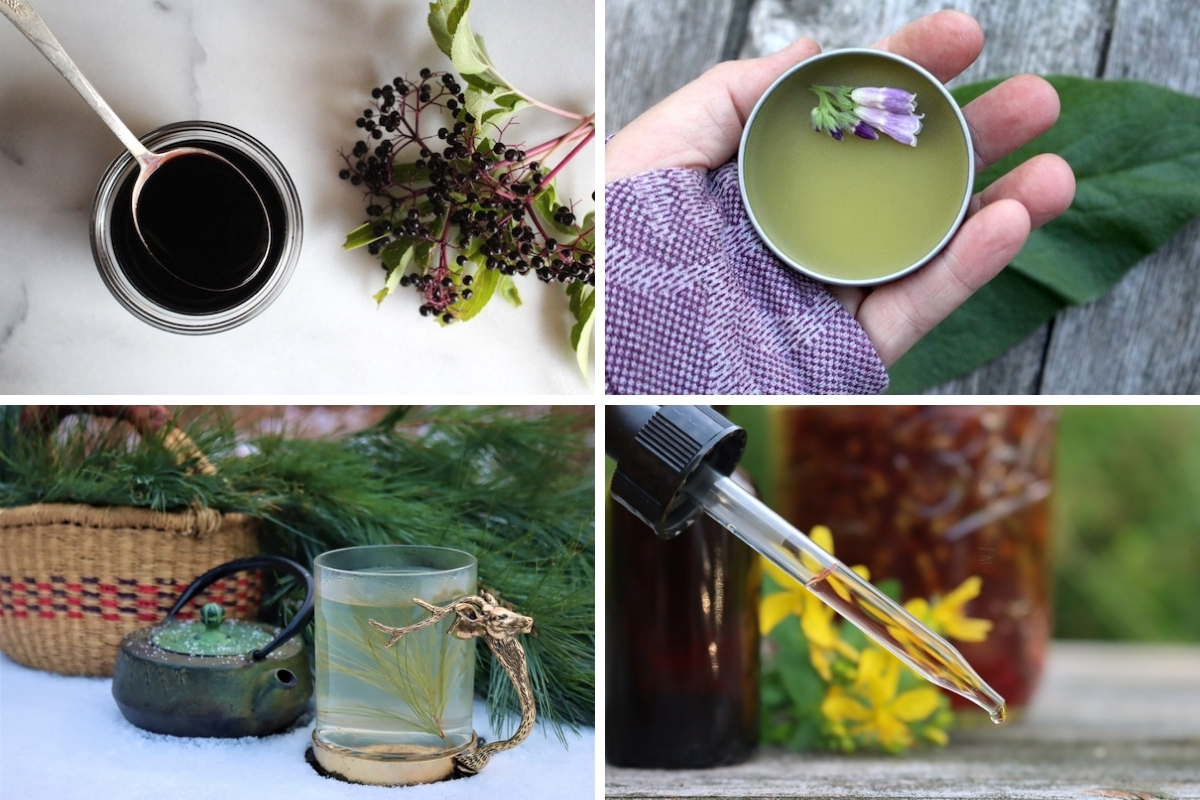
Table of Contents
- Types of Herbal Preparations
- Fresh and Dried Herbs
- Herbal Capsules
- Herbal Teas
- Infusion
- Decoction
- Herbal Broth
- Herbal Steams
- Poultices
- Tincture
- Herbal Glycerites
- Herbal Sprays
- Infused Oil
- Herbal Salve
- Herbal Soap
- Bath Salts, Bath Bombs & Sitz Baths
- Infused Vinegar or Vinegar Extractions
- Infused Honey
- Fermented Honey
- Oxymel
- Herbal Syrups
- Herbal Cough Drops & lollypops
- Candied Herbs
- Herbal Jellies, Jello & Gummies
- Electuary
- Fomentations and Compresses
- Succus
- Lacto-Fermented Herbs
- Herbal Wine, Mead, and Beer
- Other Herbal Preparations?
- Disclaimer on Homemade Herbal Remedies
Making herbal remedies is a bit like baking in some ways. In the kitchen, the same simple ingredients can make anything from cakes to cookies and scones to sourdough. They’re all served in different ways and have their own place in a meal.
When preparing medicinal plants, you have a lot of choices in your home apothecary.
Most people are familiar with herbal teas, but there are actually a number of different ways that herbs are used medicinally, both topically and internally.
Some herbs are best used topically, while others work best in teas. Some have water-soluble medicinal properties, while others need the alcohol from a tincture or to be infused into oil for extraction.
The medicinal actions of some herbs change based on the preparation.
The herb yarrow, for example, is used to stop bleeding and prevent infection when used topically as a yarrow salve. When taken as tea, it’s used internally to treat symptoms of colds and flu.
The tea isn’t going to help your skinned knee any more than the salve is going to help your cold. It’s all about finding the right herbal preparation.
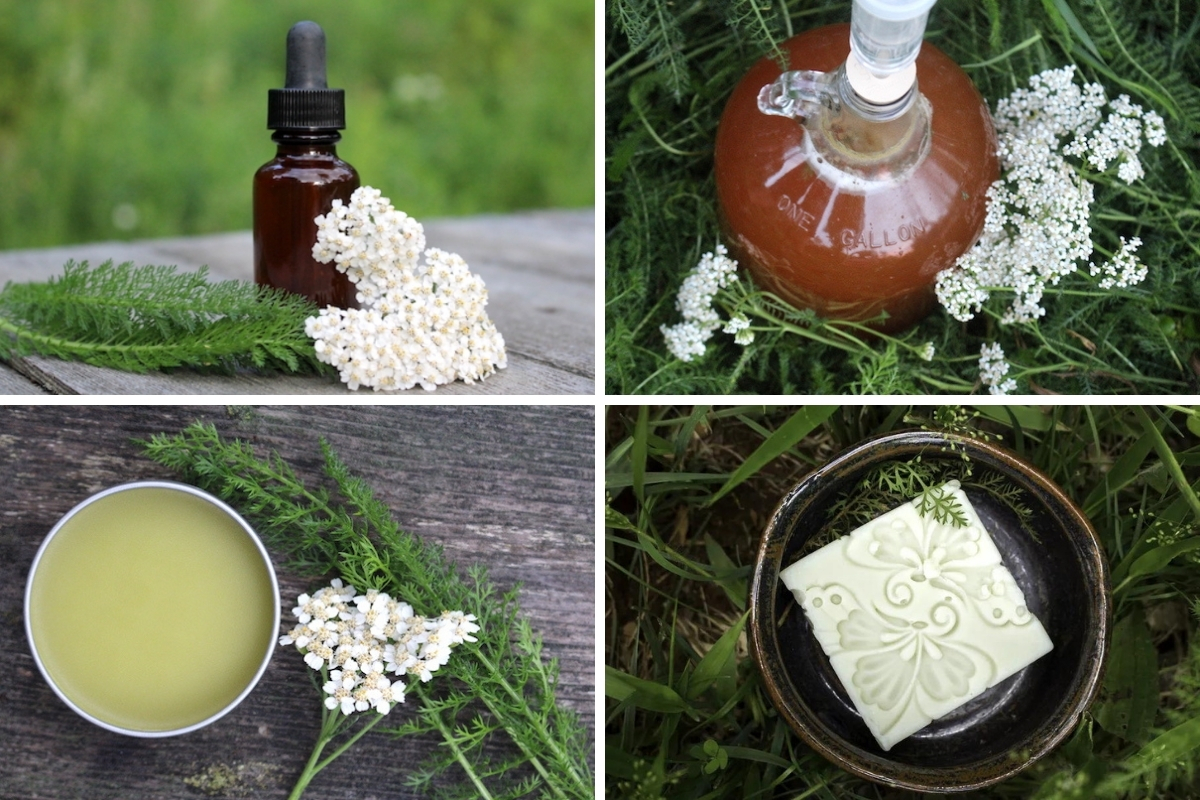
(Always consult your doctor or a clinical herbalist before trying any new herbal remedy, as there’s always the possibility of unintended consequences, allergic reaction, or interactions with other medication. If you’re harvesting wild plant material, make sure you’re 100% confident in your identification and consult multiple sources for your ID. The following is based on my research and experience, but I don’t claim to have any certifications that would qualify me to advise you on your health. Please do your own research and always verify with multiple reputable sources.)
Types of Herbal Preparations
This basic list of herbal preparations covers the most common ways herbs are administered. I’ll go through each in detail shortly.
Not every preparation is used with every herb, but here’s a basic overview of some of the choices available:
- Fresh/Dried Herbs – Many herbs can be eaten right out in the garden, or added as dried herbs to simmering cook pots in the kitchen.
- Herbal Capsules – A convenient way to take dried herbs, herbal capsules allow for easy dosing.
- Tea – Made by adding herbs to hot water, tea is one of the simplest herbal preparations.
- Infusion – A strong tea made with either hot or cold water. They’re often allowed to steep for many hours.
- Decoction – A very strong herbal tea made by reducing the “tea” often by as much as half its original volume to concentrate the medicinal constituents.
- Herbal Broth – Often made with medicinal mushrooms, or by incorporating herbs into traditional slow-cooked bone broths.
- Herbal Steams – A bit like a tea, in that boiling water is poured over herbs, but instead of drinking it you inhale the steam which is filled with the volatile oils of the herbs. This is especially useful for respiratory conditions. This method is also sometimes used on other parts of the body, such as tender parts after childbirth when they’re still too injured to apply a compress.
- Poultice – Herbs are finely chopped or pulverized completely before topical application.
- Tincture – An alcohol extract of fresh or dried herbal material. Most are single extraction tinctures made with just alcohol, but some use a double extraction method that first extracts with alcohol and then water to pull out both the water and alcohol soluble constituents.
- Herbal Glycerite – Similar to a tincture, a glycerite uses vegetable glycerine instead of alcohol to create a herbal extract. They’re mostly used in children or individuals avoiding alcohol.
- Herbal Sprays ~ Usually similar to a tincture, but put into a spray bottle for topical use. Some of the most common are throat and mouth sprays, which are alcohol-based extracts put into spray bottles for topical use on the mouth and throat. There are other sprays used topically elsewhere for wound treatment and skin conditions as well.
- Infused Oil – Dried herbs are infused into a carrier oil, which can be used internally or externally. It’s most commonly applied topically or used to make herbal soaps, salves, or cosmetics.
- Herbal Salve -Made by adding wax to a herbal infused oil to create a semi-solid herbal preparation that’s easy to apply topically.
- Herbal Soap – Often made with herbal infused oil, a herbal soap is used topically to disinfect or treat skin conditions.
- Bath Salts, Bath Bombs, and Sitz Baths – One big group of herbal preparations that rely on sitting in a herbally infused bath. While bath bombs and salts usually mean a full-body immersion in a tub, sitz baths are usually shallow water immersions for just one part of the body.
- Infused Vinegar – Vinegar is used to preserve herbal material, and extract its medicinal components similar to a tincture.
- Infused Honey – A small amount of dried herbal material is added to honey and allowed to infuse. Usually 1 part herbs to 2-5 parts honey by volume.
- Herbal Fermented Honey – When you add fresh herbs to honey (instead of dried), the herbs begin to ferment in the honey creating something that’s somewhere between mead and syrup. The fermentation makes some herbs more bio-available and helps to preserve them at the same time.
- Oxymel – A mixture of herbs, vinegar, and honey that’s taken as a syrup. They’re generally a bit more pleasant than straight herbal vinegar.
- Herbal Syrups – Herbs are simmered with water and sugar or honey to create a sweet medicinal syrup.
- Herbal Cough Drops & Lollypops – In this preparation, herbs are cooked with sugar and honey to make hard candy that can be used as cough or throat drops.
- Candied Herbs – Sometimes, the herbs themselves are candied for preservation. Good examples are candied ginger and candied angelica, where the whole herb is immersed in sugar until it’s fully preserved.
- Jellies, Jello & Gummies – These preparations are particularly suited to young children, who may not want to take their medicine but can be convinced to eat herbal jello for a sore throat or take elderberry gummies to help with a cold. In some cases, the natural gelatin that holds them together also has therapeutic effects too.
- Electuary – A mix of honey and dried herbs, where enough dried herbal material is added so that the electuary can be formed into herb and honey packets or pills. It’s mostly herbal material, just held together with honey.
- Compress – A cloth is soaked in a cool herbal infusion and then applied topically.
- Formentation – A cloth is soaked in a strong hot infusion and then applied topically. Similar to a compress, but applied warm so the heat is part of the treatment. They’re most commonly used for pain relief.
- Succus – The freshly expressed juice of a herb, this preparation spoils quickly. It was commonly used in the 1800s and before, when people visited the apothecary to have fresh preparations made on the spot. It’s not commonly used anymore because it’s not shelf-stable, so you won’t find it in the pharmacy. They can, however, be made simply at home.
- Lacto-Fermented Herbs – Fresh green herbs can be lacto-fermented, much like sauerkraut.
- Herbal Wine and Mead or Herbal Beer – Historically, herbal beers were one of the more common herbal preparations. Back when everyone was brewing at home, instead of hops you might add various herbs which served to flavor and preserve the beer but were also intended for medicinal benefit. High-quality distilled alcohol for tinctures may have been expensive, but any peasant could harvest wild grapes and wild herbs, combing them for homemade medicine.
Often in herbal preparations, herbs are mixed to complement and amplify the medicinal actions. If you’re interested in developing your own herbal formulations, I’d recommend taking this online course in Mastering Herbal Formulations from the Herbal Academy.
Fresh and Dried Herbs
Many medicinal herbs can be used directly out of the garden, whether they’re fresh or dried. There are many ways to use them without too much preparation.
For example, you can eat some herbs right out of the garden to take care of minor problems. Chewing on mint leaves often reduces nausea, and sometimes even smelling fresh rosemary leaves will have the same effect.
I used both of those to treat my morning sickness when I was pregnant with my first child, and they worked wonders.
Fresh herbs spoil quickly, so they’ll need to be used in home cooking or right out in the garden.
Keeping jars of dried herbs is one of the most versatile ways to store herbs, and it’s the basis for many other herbal preparations.
They’re used for almost every herbal preparation listed, from teas to tinctures and more. Those are extracts of course, which I’ll cover in a moment, but whole dried herbs can be used just as they are for herbal medicine as well.
Dried herbs can be used to make:
- Herbal Sleep Dream Pillows ~ Mountain Rose Herbs
- Herbal Dryer Sachets ~ The Rebooted Mom
- Natural Drawer Fresheners ~ Wellness Mama
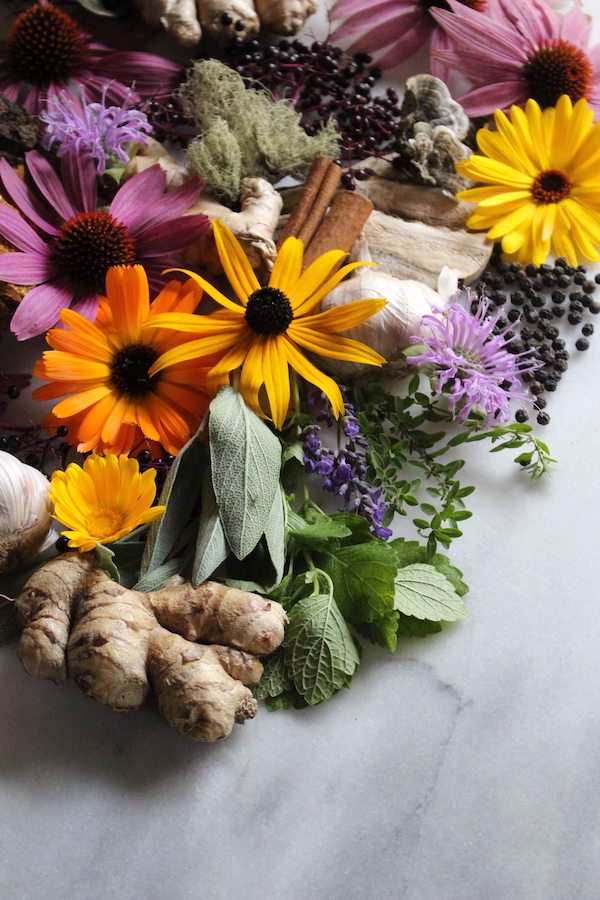
Herbal Capsules
Dried herbs can be taken orally in homemade herbal capsules.
Herbal capsules have a few benefits:
- You don’t taste the herbs going down as you otherwise would with tea or tincture.
- They can be taken anywhere, and you don’t have to prepare hot water as you would for tea.
Empty gelatin capsules are easy to fill with powdered herbs, though the process is made simpler with a capsule filling tray or tiny spatula made for that purpose.
In the photo below, yarrow is placed into herbal capsules on a capsule filling tray. Though it is often used externally to stop bleeding, in this case, yarrow is used internally to treat heavy menses.
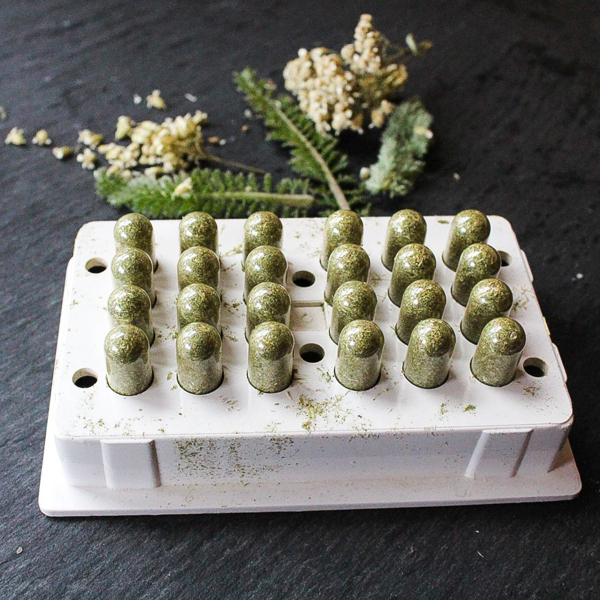
Herbal Teas
Most budding herbalists start with herbal teas because you can find premade bags at the store. I know I started by grabbing things like echinacea tea at the store before I ventured into making my own.
Herbal teas are one of the simplest herbal preparations. All you have to do is add the medicinal herbs to hot water, allow it to steep, then strain and drink.
Try these different herbal teas at home:
- Echinacea Tea
- Pine Needle Tea
- Sage Herbal Tea Recipe
- How to Make Thyme Tea
- Marshmallow Root Tea
- Linden Tea
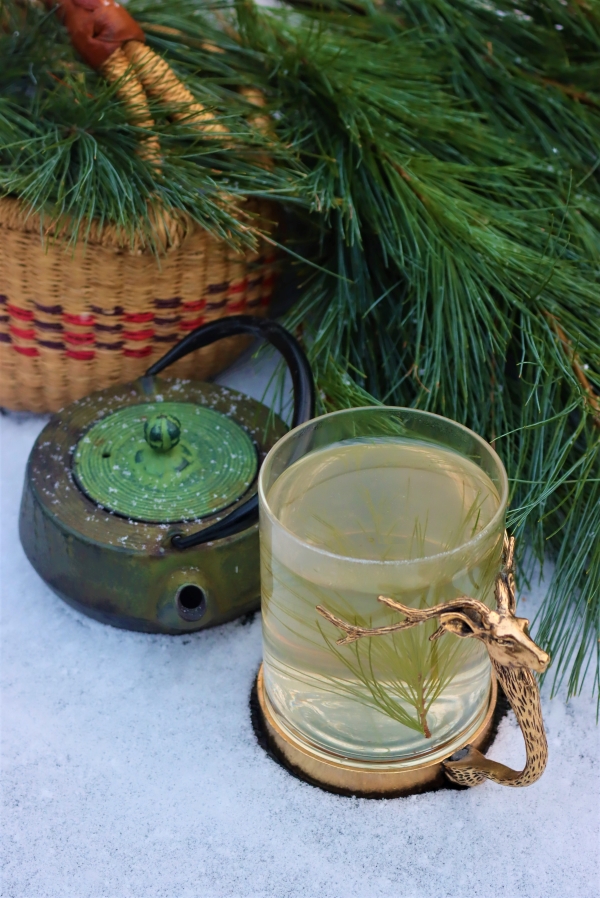
Infusion
An infusion is one of the most common herbal preparations, and it’s water-based, similar to tea. Most infusions are made with the delicate parts of the plant, typically called the aerial portions like the flowers, leaves, and stems.
It’s best to think of an infusion like a robust herbal tea made with either cold or hot water that has been allowed to steep for many hours before use.
If you’re brand new to medicinal herbs, infusions are one of the best places to start; they’re one of the simplest forms of herbal preparations. It’s perfect for beginners.
Mountain Rose Herbs has detailed instructions on how to make both a hot and cold herbal infusion. This is a quick rundown on the process:
Choose specific herbs to suit your particular therapeutic needs. Grab a teapot and boil water. Then, pour the boiling water over the herbs and let it steep for at least an hour. If you want to drink it hot, you can simply reheat it. The longer that an infusion sets, the stronger it becomes.
Some herbalists recommend using an overnight infusion with room temperature water because heat destroys some of the nutritional value in some types of herbs. Stinging nettle and red clover are generally made as room temperature infusions for that reason.
Here are some examples of herbal infusions:

Decoction
Decoctions are another water-based herbal preparation, but unlike infusions, these are typically made with the bark, roots, seeds, and berries of the herbal plant. Some say that decoctions are a strong herbal tea, but it requires a lot more heat to prepare.
That’s because when you make a decoction, you’re extracting the active constituents from the hard parts of the plant. That takes more time, and you have to reduce the “tea” by as much as half its original volume to end up with the concentrated constituents.
The Herbal Academy has detailed instructions on how to make a decoction, but here’s the basic process:
Take somewhere between a teaspoon and a tablespoon of herbal material (per cup of water) and put it in a saucepan. Make sure the herb is powdered, broken, or crushed into small pieces. It shouldn’t be large chunks.
Add a cup of water, and bring it to a boil. Then, reduce the heat and let it simmer for 15 minutes.
After it’s simmered, strain the decoction through a fine-mesh strainer or cheesecloth. It should be drunk while still hot.
Try these different herbal decoctions:
Herbal Broth
Similar to decoctions, herbal broths are slowly simmered extracts. They can be incorporated into cooking, or simply labeled into a mug and sipped.
Simply adding medicinal herbs to a slow-simmered homemade bone broth will work, and allows you to use your food as medicine. In that case, you need to be careful to use herbs with a pleasant flavor.
The most common herbal broth is a medicinal mushroom broth, usually made with incredibly hard to extract species such as Chaga, Reishi, and Turkey Tail Mushrooms.
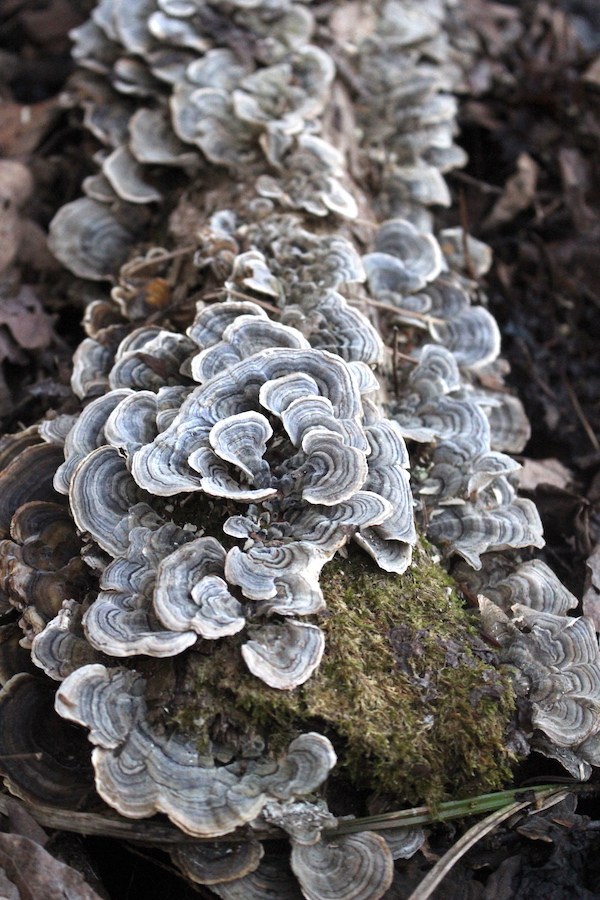
Herbal Steams
Usually used to extract volatile compounds, herbal steams are often used for respiratory issues.
Boiling water is poured over aromatic herbs and then the resulting steam is gently inhaled.
My favorite herbal steam is made with thyme, which works wonders for clearing the sinuses.
Beyond thyme, there are dozens of herbs traditionally used in herbal steams, including peppermint, lavender, eucalyptus, cinnamon, basil, chamomile, and pine needles.
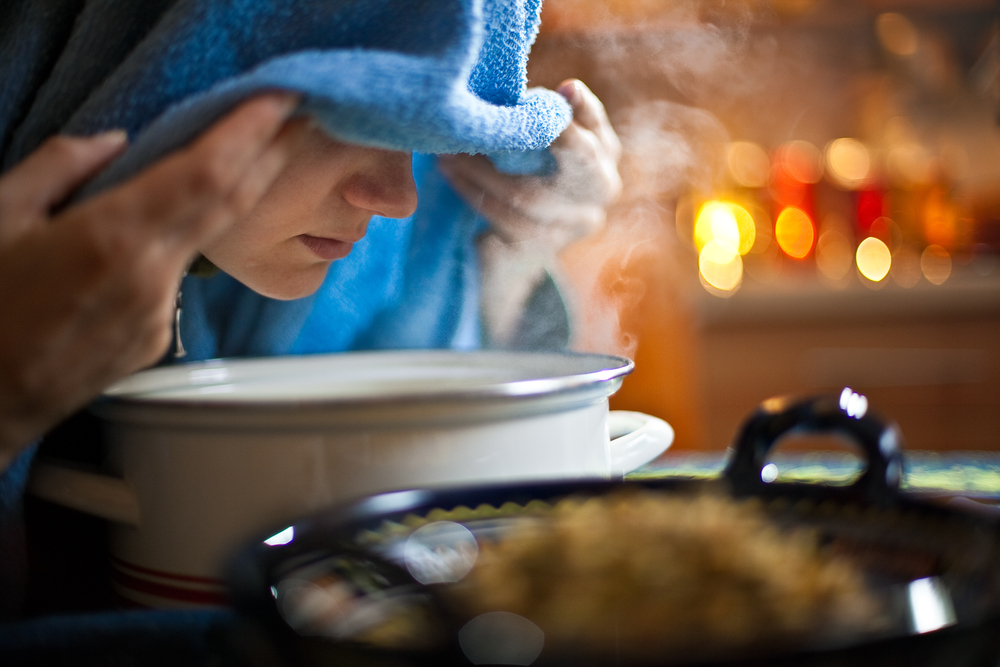
Poultices
Poultices are made from fresh or dried herbs that are moistened and finely chopped or pulverized before using as a topical application. One of the most common poultices is made with the plantain herb to be applied for bug bites and stings.
Poultices also help with burns, rashes, strains, sprains, inflammation, and many other topical complaints.
There are different types of poultices that you can make.
- Astringent poultices are used to help draw out foreign objects, such as a splinter or glass fragment. They also help to draw out pus or debris from wounds by increasing the circulation of the skin.
- Heating poultices relax muscles and promote circulation and warmth to an area. These are most often applied to bruises, strains, sprains, and other muscle problems. However, you must be careful when using a heating poultice because it could cause skin irritation or burning.
- Vulnerary poultices are made with demulcent herbs because of their soothing effects. They’re most often used for inflammation, rashes, or abrasions.
When you make a poultice, you’ll spread it directly on the surface of your skin, typically up to an inch thick, and keep it in place with gauze or muslin wrapped around the area. Some people don’t like poultices because they take longer to work and are messier than salves or ointments, but a poultice is a fantastic option for using fresh herbs in the field.
Here’s how to make a poultice:
Decide if you want to use fresh or dried herbs and how much of the herbs you need to use based on the size of the area you want to cover. If you’re using fresh herbs, you’ll need to chop them up into small pieces. A mortar and pestle help to crush the herbs and get the juices flowing.
Spread the herbs over the skin area and wrap the area with gauze or muslin to hold your poultice in place. If you use dried herbs, you’ll need to combine them with a bit of hot water to help create a paste.
Try these poultice recipes:
Tincture
Tinctures are highly concentrated herbal preparations made by extracting the active properties of the medicinal herb with a mixture of alcohol and water. Typically, tinctures are the most common preparation used by naturopaths and herbalists because they’re incredibly effective.
Most are single extraction tinctures made with just alcohol. Still, some use a double extraction method that first extracts with alcohol and then water to pull out both the water and alcohol soluble constituents. A reishi mushroom tincture is an example of a double extraction tincture.
If you’re preparing tinctures at home, I suggest starting with a single extraction. However, tinctures take time to make, so you have to have patience. Remember, these are also much stronger than infusions or decoctions, so they need to be taken in much smaller doses.
Here’s how to make a tincture at home.
Start by adding finely chopped medicinal herbs into a glass jar. For tinctures, all parts of the plant may be used. Then, pour alcohol over the plant matter and close up the jar. Keep this in the container for four to six weeks, shaking the jar periodically.
After the time frame is up, strain the tincture through a fine-mesh strainer and put it back into a clean glass jar. Tinctures should be stored in a dark cabinet for the most extended shelf life.
Try making these different herbal tinctures:
- Yarrow Tincture
- Elderberry Tincture
- Black Walnut Tincture
- Burdock Tincture
- Dandelion Tincture
- Chickweed Tincture
- Nasturtium Tincture
- Reishi Mushroom Tincture
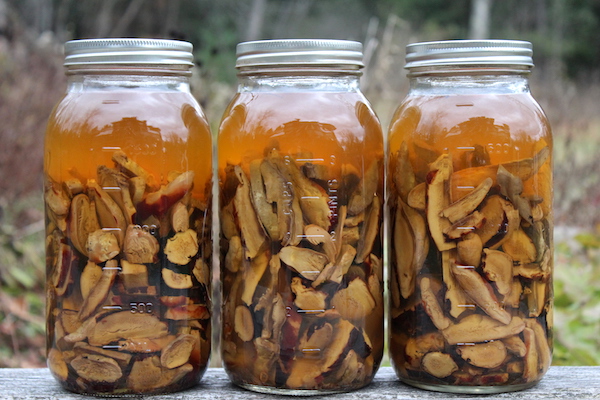
Herbal Glycerites
Typically called glycerin-based extractions, glycerites are quickly becoming a popular option for parents who don’t want to use alcohol-based tinctures for their children. Using glycerin allows you to create a sweeter, more palatable extract, but they aren’t as potent as alcohol-based tinctures.
Something you should note before getting started is that herbal glycerites have a much shorter shelf life, and they are best stored in the refrigerator.
You need to have food-grade vegetable glycerin, a clear, odorless liquid that comes from vegetable oils.
When making glycerites, you want to use fresh herbs because glycerin is best at preserving fresh plant juices, but if you only have dried herbs, that work as well.
Here’s how to make an herbal glycerite at home:
Start with a clean glass jar and add your chopped fresh herbs, filling the jar as much as possible. If you use dried herbs, don’t fill the jar all the way because dried materials expand more. Then, add enough glycerin to fully cover the plant material to within one inch of the top.
Use a spoon to poke at the plant material and release any air bubbles. Then, cover the jar with the lid and set it in a dark location at room temperature. It takes between four to six weeks for glycerites to be completed, and make sure you shake the bottle once or twice daily.
After the infusing is completed, strain the glycerite through a fine-mesh strainer or a few layers of cheesecloth. Then, put it back in a labeled, clean jar.
Here are a few glycerite recipes to try:
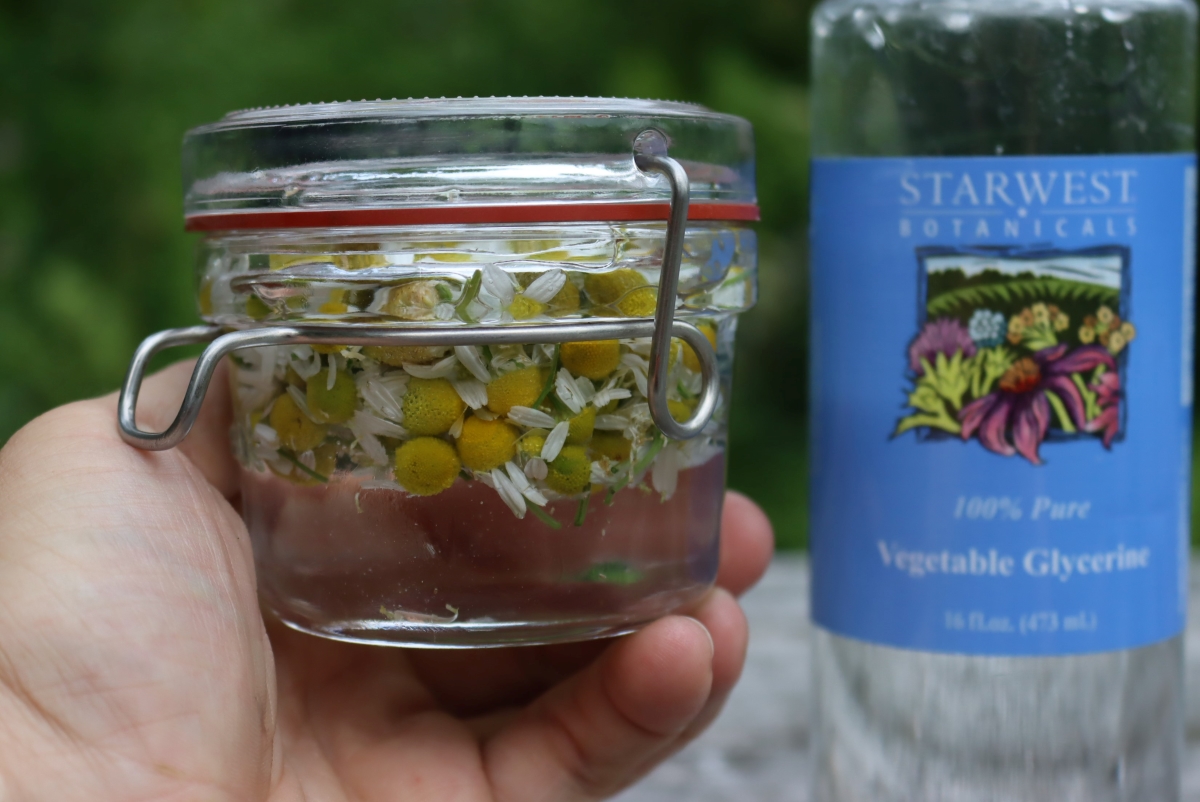
Herbal Sprays
Basically a tincture in a spray bottle, herbal sprays are a convenient way to apply herbal preparations topically. That might mean “topically” inside your mouth and throat for a herbal sore throat spray, or topically to cuts and wounds as with a yarrow spray.
Generally, herbal sprays are alcohol-based extracts so that they’re preserved and shelf-stable. The added alcohol also helps to work as a topical disinfectant, acting to both preserve the herbs and help them treat symptoms on the skin.
Sometimes, as with herbal throat sprays, raw honey will be added to improve flavor and as an added antiseptic.
Beyond direct topical uses, herbal sprays are sometimes used as insect repellants and aromatherapy sprays. We also make a tea tree deodorant spray that’s incredibly effective, simply mixing witch hazel and a few drops of tea tree oil.
Really anything herbal in a spray bottle counts as a herbal spray.
- Herbal Throat Spray ~ Wellness Mama
- Yarrow Herbal Bug Repellant ~ The Healthy Home Economist
Infused Oil
Some of the most versatile herbal preparations, herbal infused oils are the first step to making all manner of other herbal preparations.
You can use these directly on the skin or use them to create herbal salves, herbal soaps, and ointments. Infused oils are great for nourishing dry skin, reducing irritated skin, inflammation, or muscle pain.
Infused oils are made by infusing dried herbs into a carrier oil. These can be used internally or externally; some prefer to use infused oils for recipes because they enhance the flavor of dishes.
Making herbal infused oils is one of the easiest forms of herbal preparations, so it’s perfect for beginners. It starts by taking a carrier oil and your favorite dried medicinal herb. However, it takes time to create herbal-infused oils, so you need some patience.
Start by filling your glass jar with the medicinal herb or herbs of your choosing. Fill the jar, leaving at least an inch of space at the top. Don’t worry; the oil has plenty of space to fill up. Now, pour in the oil that you selected, leaving space at the top between the lid and oil.
Store this in a cool, dark place, such as your kitchen cabinet, and remember to shake it regularly. After four to six weeks, strain out the dried herbs and store your infused oils.
- How to Make Arnica Oil
- Conifer Infused Oil
- How to Make Lavender Infused Oil
- How to Make Dandelion Oil
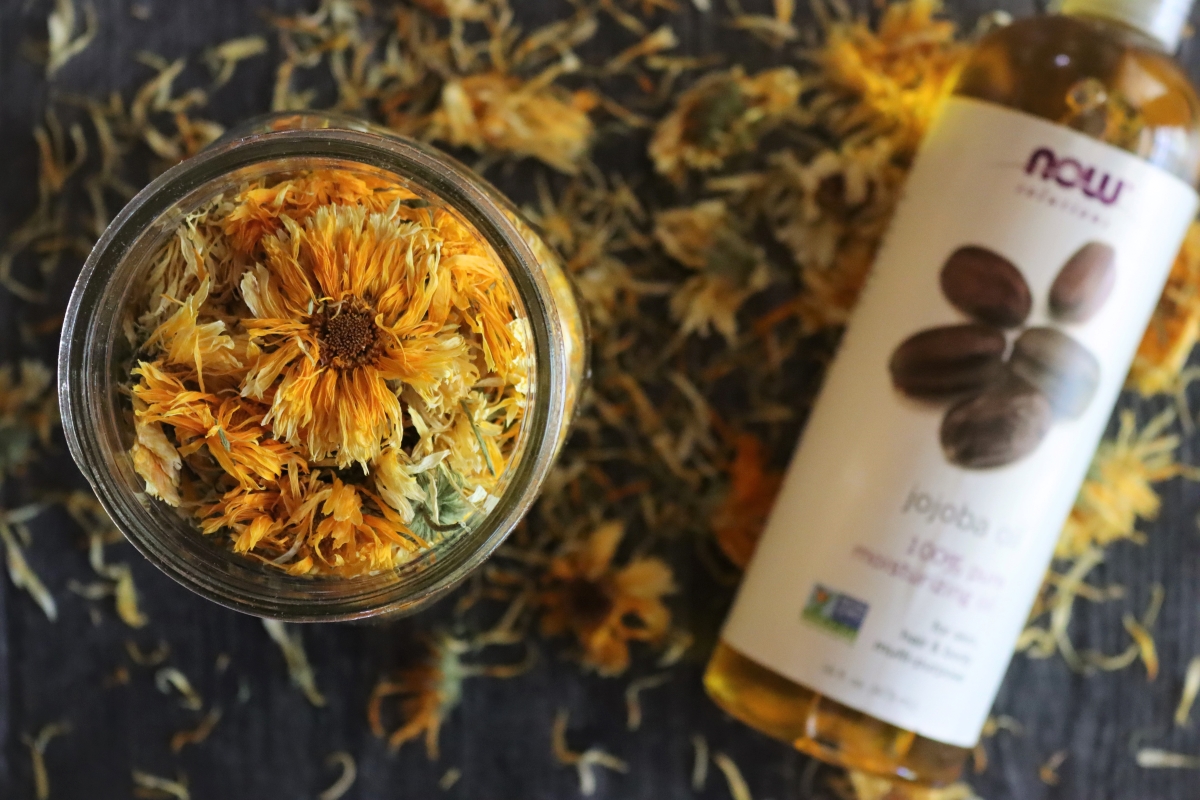
Herbal Salve
Once you have an infused herbal oil, you combine it with beeswax to make a herbal salve. Herbal salves are thicker than ointments, but that helps them stay on the skin longer.
They are made by adding wax to a herbal infused oil to create a semi-solid herbal preparation that’s easy to apply topically. Herbal salves are a simple yet effective way to use herbs. It’s easy to put a container of salve in your purse or diaper bag, and since they’re semi-solid, they aren’t as messy.
You can make herbal salves with a single herb or herbal blends. You can come up with whatever combination you want for whatever you need.
- How to Make Jewelweed Salve
- Make Yarrow Salve
- DIY Plantain Salve
- How to Make Comfrey Salve
- DIY Calendula Salve Recipe
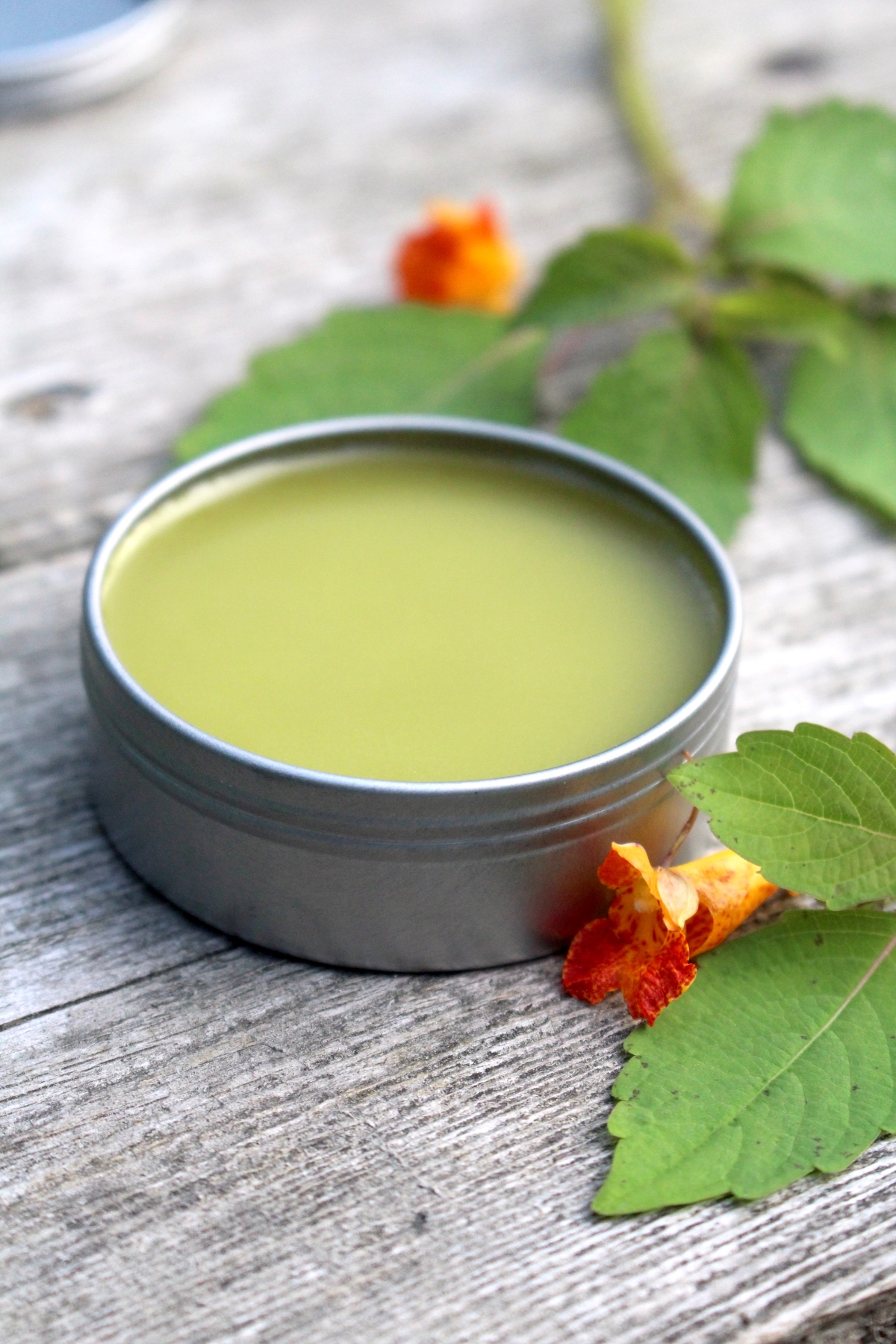
Herbal Soap
If you have herbal infused oil, you can use that to make herbal soaps that can be applied topically to treat skin conditions, disinfect wounds, and other wonderful uses. You can also make herbal soaps with herbal teas, infusions, tinctures, fresh or dried herbs, and decoctions.
Learning how to make herbal soap is a great way to use up things in your medicinal herbal cabinet. I sometimes make soap with my homemade witch hazel extract; you can use it to make this yarrow and witch hazel herbal soap.
People are often too nervous about getting into making soap at home. Working with lye can be tricky, but with the proper safety precautions, it can be incredibly rewarding.
If you’ve never made soap, I’d suggest reading this primer on how to make soap at home before you get started.
Here are some different herbal soap recipes to try:
- Creamy Chickweed Soap
- Honey & Dandelion Soap Recipe
- Herbal Soap with Rosemary and Peppermint
- Chamomile Lavender and Eucalyptus Soap
- Herbal Gardeners Soap with Spring Weeds
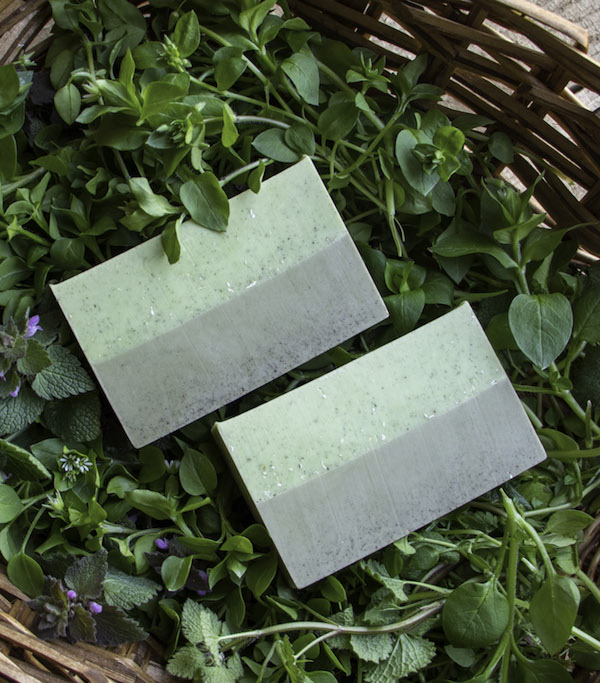
Bath Salts, Bath Bombs & Sitz Baths
The bath is a simple way to apply herbs to topically, and the warm water is often incredibly soothing. Add in a fizzy herbal bath bomb or some aromatic bath salts and you’ve turned a relaxing tub into a herbal therapy session.
Sitz baths are similar, but they’re more targeted. Usually, a sitz bath is used to immerse tender parts to treat postpartum issues or hemorrhoids, and just one part of the body is immersed in water.
- Basic Herbal Bath Salts Recipe ~ My Tiny Laguna Kitchen
- Herbal Bath Bombs ~ Homespun Seasonal Living
- Postpartum Herbal Sitz Bath ~ Mountain Rose Herbs
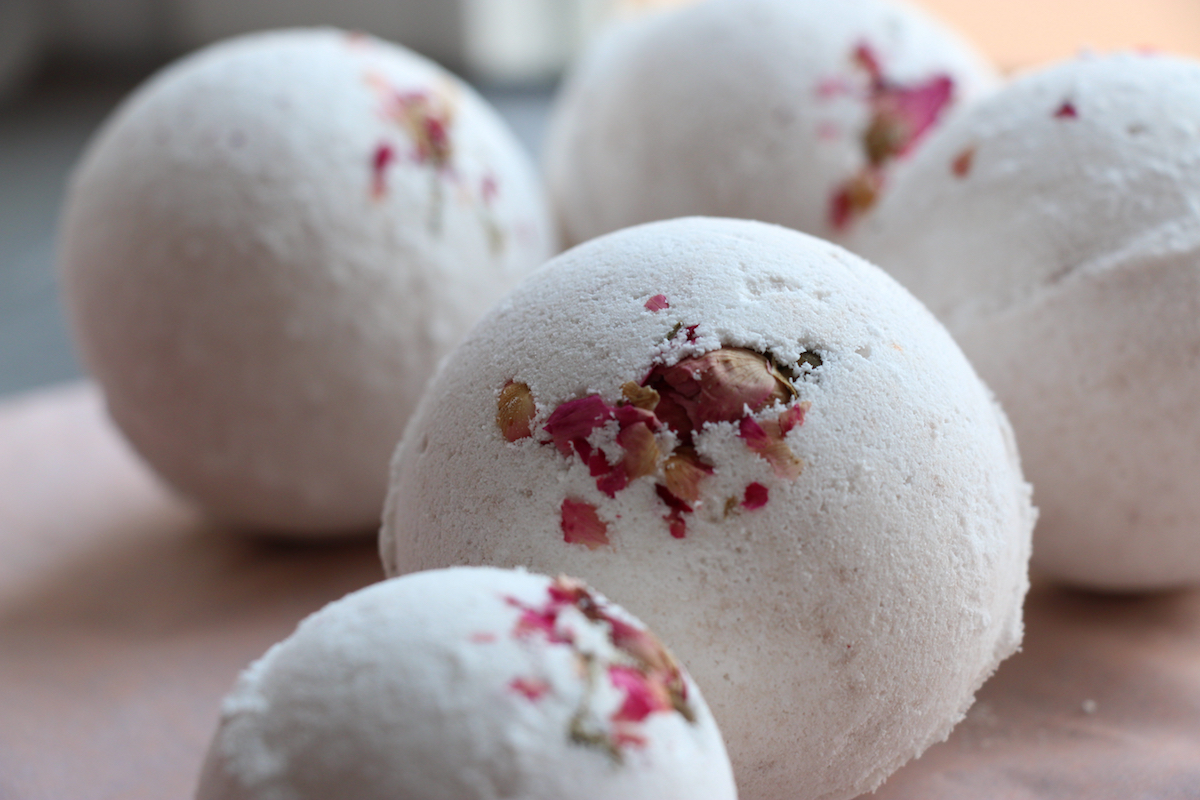
Infused Vinegar or Vinegar Extractions
Vinegar-based herbal preparations are another popular choice because they draws out more of the nutrients and mineral profiles in the herbs. These have a long shelf life, similar to tinctures made in alcohol, so you can plan to keep them around for a long time.
Herbal vinegar is a great choice if you have upper respiratory problems, such as a sore throat or congestion. You can use infused vinegar like tinctures or add them to infusions and decoctions after being prepared separately.
The most common way to use infused vinegars is when cooking. They taste great on veggies and salads but don’t shy away from using them to treat ailments. A good friend of mine swears that her vinegar-based extractions stopped her itchy scalp problem in its tracks!
One of the best things about making herbal kinds of vinegar is that you can use any type of vinegar you have, whether it’s apple cider vinegar, white vinegar, rice vinegar, or any other kind. That’s why it’s such a popular choice for culinary dishes; the combination of flavors is nearly endless.
Here’s how to make herbal vinegars.
Start with a large quart jar and add one cup of dried herbs; use one type of herb or a combination of your favorites. Feel free to experiment! Then, add two cups of the vinegar you chose. Cover the jar with the lid, but keep a sheet of waxed paper underneath if using a metal lid because the vinegar causes the metal to rust.
Vinegar-based extractions take up to one month to infuse. Make sure to shake the jar regularly and start tasting after one week.
After you have the flavor desired, grab a glass jar or bottle to store your newly finished herbal vinegar. These bottles need to be stored in a cool, dark place.
Here are some infused herbal vinegar to try at home:
- Lavender-Rosemary Herbal Vinegar
- Elderberry-Infused Herbal Vinegar
- Infused Dandelion Vinegar
- Bee Balm Vinegar
- Nasturtium Infused Vinegar
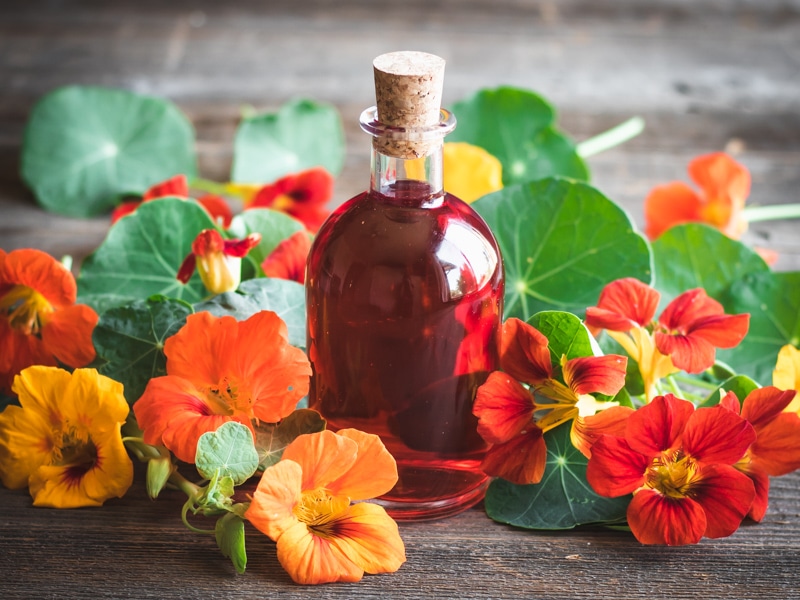
Infused Honey
Without a doubt, infused honey is probably the sweetest herbal preparation option, and it’s super effective. Infused honey helps to treat sore throats, clear viruses, and work on a compromised immune system.
Honey itself is valuable when you have an ailment. It’s a natural emollient, demulcent, and has nutritional benefits. The demulcent properties make it effective at calming coughs and soothing dry, painful throats. If you’re having trouble swallowing because your throat hurts, honey is the way to go.
When making an infused honey, you add a small number of herbs to the honey and let them infuse. It’s usually recommended to use a ratio of one part herbs to two to five parts honey based on the volume you have.
Be sure to use dried herbs for infusions, as the moisture in fresh herbs will cause the honey to ferment. (We’ll discuss fermented honey preparations next…)
Here are some herbal-infused honey recipes:
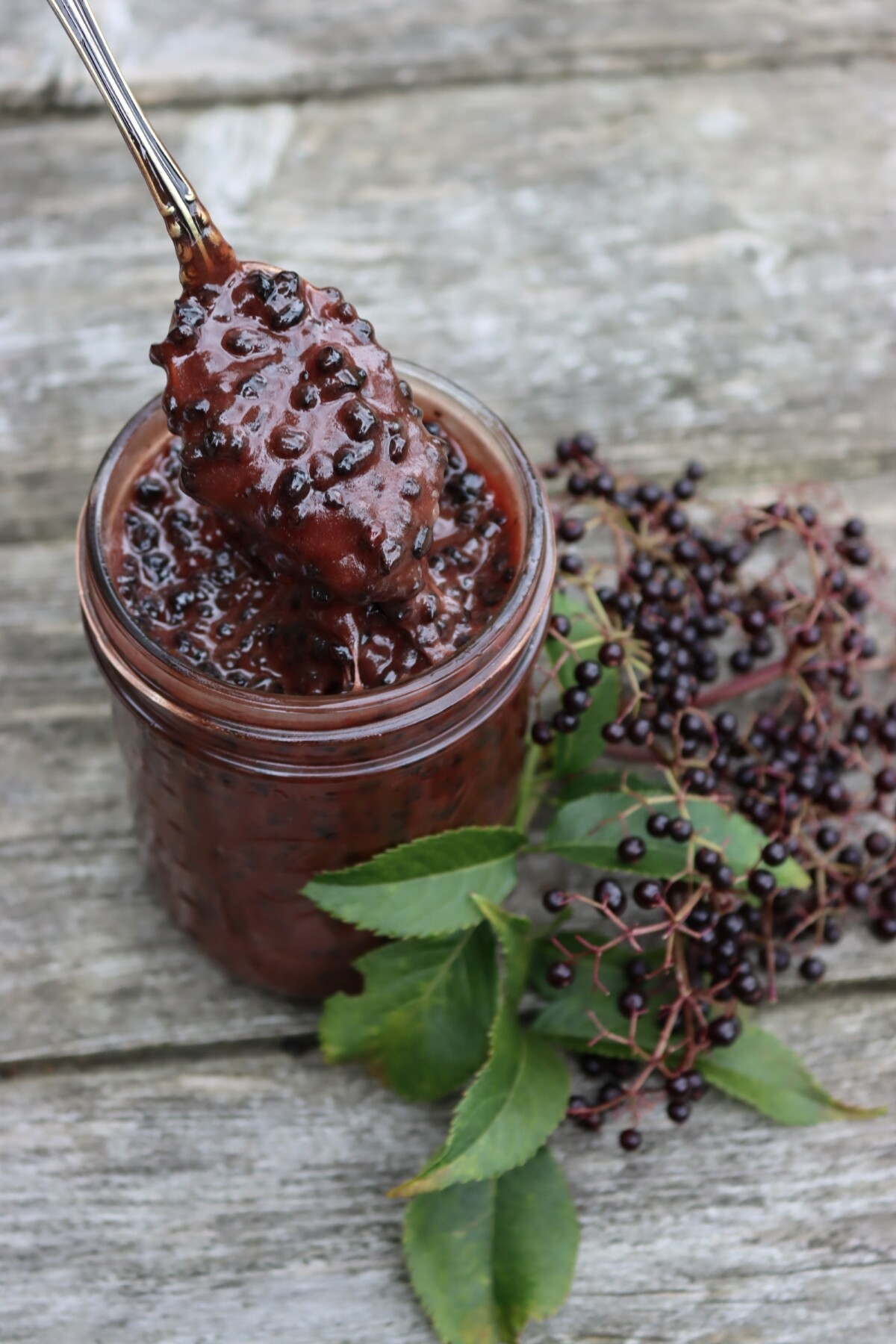
Fermented Honey
While dried herbs make herbal infused honey, the moisture in fresh herbs can be used to make herbal fermented honey.
Honey already contains natural yeast, but it doesn’t ferment because the sugar concentration is too high. Add a lot of water and you can easily make mead (honey wine) at home.
Add just a bit of moisture in the form of herbs or berries, and you’ll get a mildly fermented herbal honey instead.
Some herbs are more bio-available after they’ve been fermented. Turmeric is a good example, and fermented turmeric is a powerful anti-inflammatory. Adding fresh turmeric to honey is one way to ferment this herb.
Here are a few more good choices for herbal fermented honey:
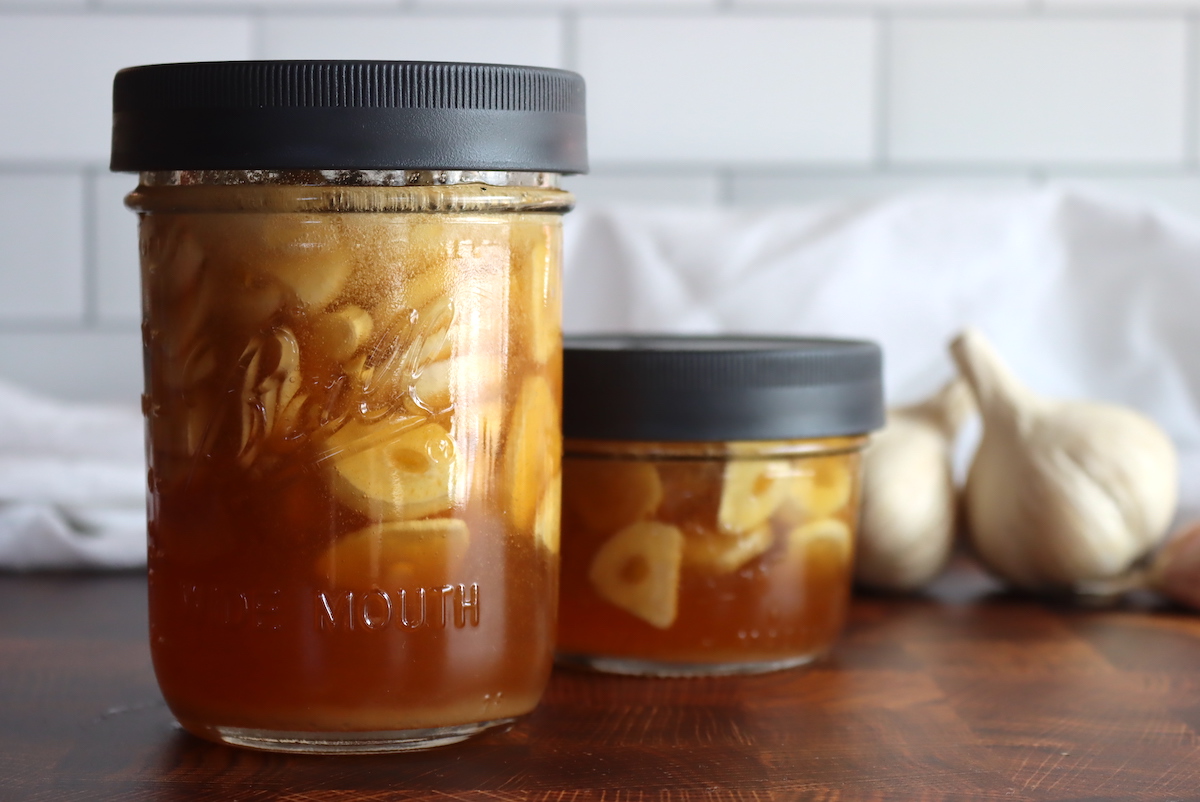
Oxymel
An oxymel is a mixture of herbs, vinegar, and honey that you take like a syrup. It’s most often used as an herbal preparation to mask the flavor of strong aromatic herbs, such as garlic and cayenne.
Fire cider is probably the best-known oxymel, but there are many others.
Taking an oxymel is much more pleasant than a straight-infused herbal vinegar.
Most oxymel preparations are made with a combination of apple cider vinegar and raw honey. These are two everyday kitchen items, and most herbalists use this to calm an irritating cough, soothe a sore throat, and strengthen your weakened immune system.
An oxymel isn’t as common as other herbal preparations these days, but historically, it was an incredibly popular herbal remedy. As more people come to realize the therapeutic value of both raw cider vinegar and raw honey, homemade oxymels are coming back into popularity with the herbal community.
Here are a few oxymel recipes to try:
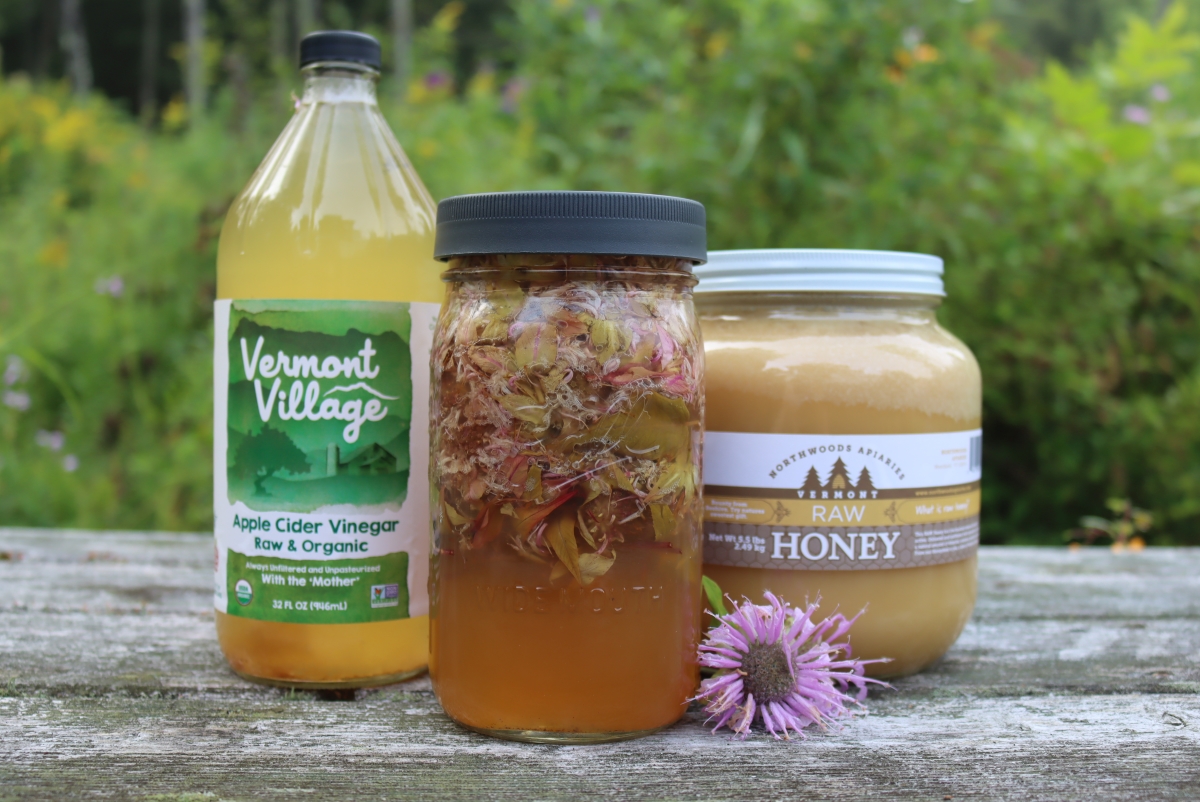
Herbal Syrups
Herbal syrups are an old-fashioned type of herbal preparation typically made to help with sore throats, coughs, colds, and other mucus-related upper respiratory illnesses. Syrups are typically a tastier herbal remedy, perfect for kids to take.
Instead of buying syrups from the store (that cost an arm and a leg), you can make your herbal syrups depending on what ailments your family has.
Try these different herbal syrups:
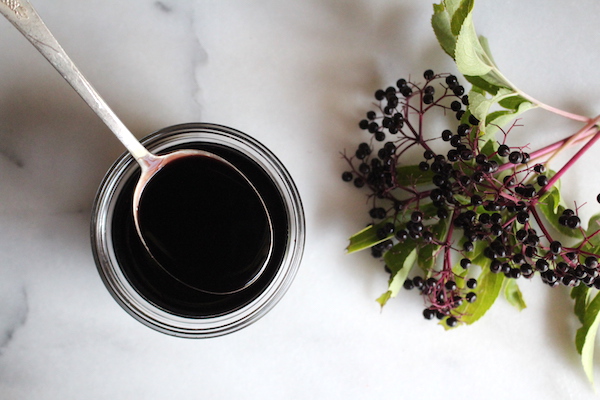
Herbal Cough Drops & lollypops
Cook a herbal syrup down a bit further, and you’ll have hard candy for herbal cough drops or lollypops.
Hard cough drops are easier to transport than syrups, and they dissolve slowly in your mouth so they keep a cough (or sore throat) at bay longer.
Herbal lollipops are pretty much the same thing, but especially attractive to children.
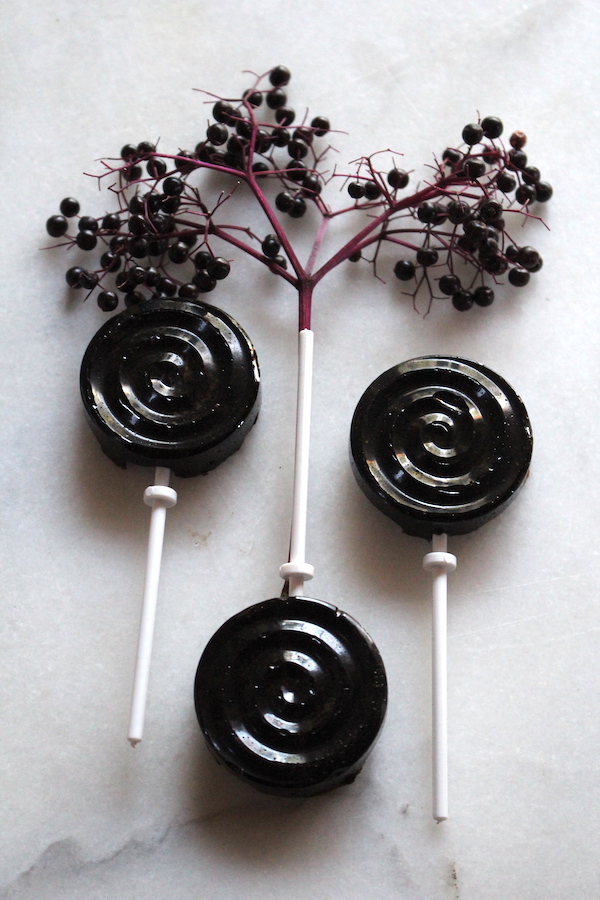
Candied Herbs
Rather than infusing the sugar or honey with herbs, candying herbs infuses sugar into the herbs themselves.
This preserves the herbs, and sweetens them a bit, which makes strongly aromatic herbs more palatable.
Ginger is one of the most popular candied herbs these days, and it’s usually taken for nausea (especially by pregnant women). Candied angelica stems were popular historically, and candied flowers are both beautiful and medicinal (depending on the flower).
Herbal Jellies, Jello & Gummies
Looking for a truly unique and kid-friendly herbal preparation? Why not try herbal jello?
Jello is just fruit juice (or herbal tea) that’s solidified with gelatin. If you use a high-quality gelatin powder you also get the added benefit of collagen too.
We make gelatin-based herbal gummy bears using simple silicone molds. Dandelion gummy bears and elderberry gummies are especially popular with my kids.
Beyond gelatin, you can also use pectin to set herbal remedies in the form of jellies. Hawthorn jelly, for example, is used for heart health.
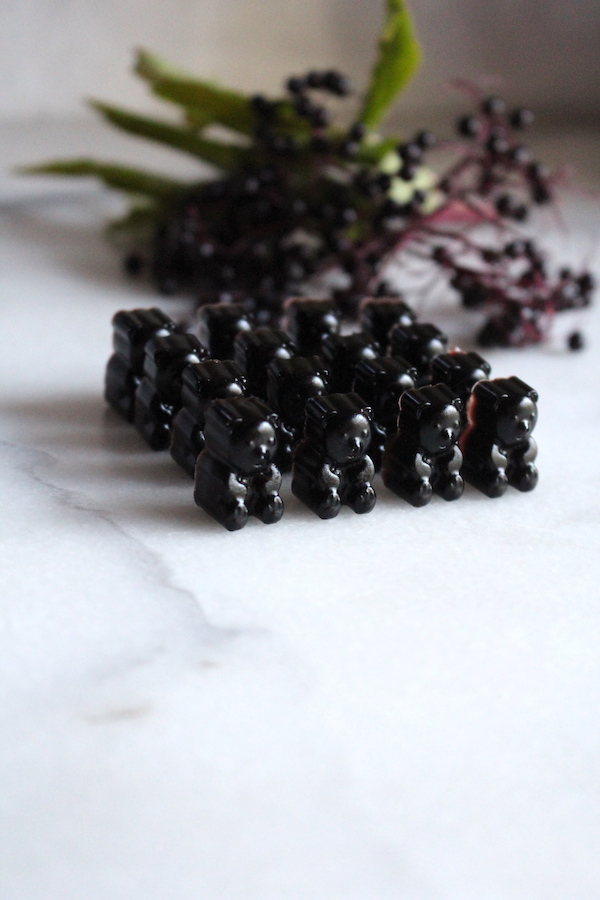
Electuary
Almost like an infused honey, an electuary is powdered herbs mixed with honey until it forms a paste. The herbal honey paste can then be eaten off a spoon, mixed into hot water to make something like tea or simply rolled in a bit more herb powder to make little electuary “pills.”
Honey has all kinds of beneficial, medicinal properties on its own, so when you combine it with a variety of powdered herbs, it’s a potent, shelf-stable herbal preparation.
Taking an electuary is easy since it tastes so good, so it’s perfect for kids. You also can warm it up and mix it with a bit of water or add it to a cup of tea. Some also use an electuary to form into honey packets or pills; it’s a different way to practice encapsulation.
Here’s how to make an electuary at home.
Start with powdered herbs and put them into a bowl. Slowly pour the honey into the bowl and stir. Keep stirring and adding honey until you form a thick paste. If you want a thinner product, feel free to add more honey.
Once you have the consistency that you want, store it in a clean jar and cap tightly. It’s recommended to keep in your fridge for up to 12 months, but since the herbs are mixed into honey, I suspect the shelf-life is much longer than that.
Here are a few electuary recipes:
Fomentations and Compresses
Sometimes called a compress, a fomentation uses infusions or decoctions to create a topical application. Compresses and fomentations are often used interchangeably, but the difference is temperature. Compresses are typically prepared cold while fomentations are prepared hot.
The temperature used matters based on why you need a fomentation. Hot fomentations relax tight muscles and bring blood to the skin, reducing internal congestion and soothing sore muscles. Cold fomentations constrict blood vessels, so this is ideal for acute burns, bruises, and inflammation.
No matter what type of fomentation you use, they are used for skin issues. They’re fantastic for rashes, eczema, and other problems.
Here are basic directions for making herbal fomentations.
Start with three to four tablespoons of medicinal herbs per one cup of water. Let this steep for up to 30 minutes, and then strain the herbs out of the liquid with a cheesecloth. Feel free to add a few drops of tincture per cup as well.
Take a clean piece of cloth and dip it into the warm infusion, squeezing out the excess liquid. Apply this to the troublesome area; you’ll immediately feel soothing relief. When it cools, dip it into the infusion again and reapply.
If you want to apply a cool compress rather than a warm fomentation, wait for the infusion or decoction to cool before dipping the cloth and using it.
Here are a few compresses and fomentations to try:
- Bone Healing Comfrey Compress
- Chamomile Compress for Hay Fever Relief
- Homemade Compress for Pain, Fever, and Cramps
- Mastitis Compress with Mullein
Succus
One of the least common herbal preparations is called succus, the freshly expressed juice of a plant or its fruit. Most producers in the herbal industry do not offer it because the juice needs to be fresh. Instead, home herbalists more often use Succi.
While tinctures are considered a much stronger herbal preparation, a succus is a valuable option for using up a surplus of medicinal herbs.
Ideally, you’ll have a juicer or something to use to create your succus. All you have to do is put the herbs, along with fruits and veggies into your juicer, but if you don’t have a juicer, making a succus is still possible. You’ll have to blend up the ingredients and strain them through a cheesecloth.
The best way to use an herbal succus is to enjoy it as a fresh juice, but it also can be preserved to be utilized later. Traditionally, herbalists added 25% alcohol by volume to preserve the fresh juice, and others add a succus to tinctures to enhance the potency.
Other times, herbalists create succi for external applications. For example, you can freeze them until you need them. A good example of this is frozen jewelweed cubes for insect stings.
Making a succus isn’t too common nowadays, but if you have large amounts of herbs that you have no idea how to use, this is a great choice. Also, it’s beneficial when you have a lot of wild herbs that you foraged. Some of the best herbs for a succus include chickweed, calendula, plantain, dandelions, elderberries, and ginger.
Here are some succi ideas:
Lacto-Fermented Herbs
Similar to homemade sauerkraut, fresh herbs can be lacto-fermented.
Fermenting herbs will preserve them, similar to the way fermentation preserves vegetables, but it also renders some herbs more bio-available.
This subject is a bit tricky, as some herbs can become toxic when fermented. Good examples of that include melilot (or sweet clover), which becomes a blood thinner when fermented. Cherry bark, similarly becomes toxic when fermented, but it’s a common herbal cough remedy otherwise.
If you choose to ferment herbs, be sure you know the impact of fermentation on the particular herb in question.
A good resource for this is The Craft of Herbal Fermentation Course from the Herbal Academy.
Herbal Wine, Mead, and Beer
Long ago beer, wine, and mead were more than just a way to enjoy a Friday night with friends.
Herbs were brewed into alcoholic beverages to preserve their medicinal properties. This was back when just about everyone made beer at home to sterilize water, and adding in medicinal herbs helped to treat common ailments at the same time.
These days, hops are ubiquitous in beer, but historically they weren’t used all that often. Instead, various wild herbs were used to flavor and preserve the beer while also adding medicinal properties. Today this is known as “Gruit” or herbal beer.
The same was true of wine and mead, and often there was little distinction between the three types of alcohol. Our ancestors would throw in malted grains, crushed fruits and honey all together to create mixed brews, and these mish-mash brews are by far the most common in the archeological record.
These days we’re often purists when it comes to beer vrs. wine vrs. mead, but back in the day they didn’t make such a distinction. The book Ancient Brews: Rediscovered and Recreated has some incredibly interesting archeological studies (and recipes) that covers historical brews in detail.
We’re big brewing nerds, and I spend a lot of time reading on this subject.
I recently wrote a detailed article on making herbal mead, and another on herbal beer (also known as gruit). Both are a good place to start for herbal brewing.
If you’re interested in herbal brewing, I’d also recommend:
- Historical Brewing Techniques: The Lost Art of Farmhouse Brewing
- Early 18th and 19th Century Brewing
- Sacred Herbal and Healing Beers
For beginning brewers, The Craft of Herbal Fermentation Course from the Herbal Academy covers everything you need to know to get started.
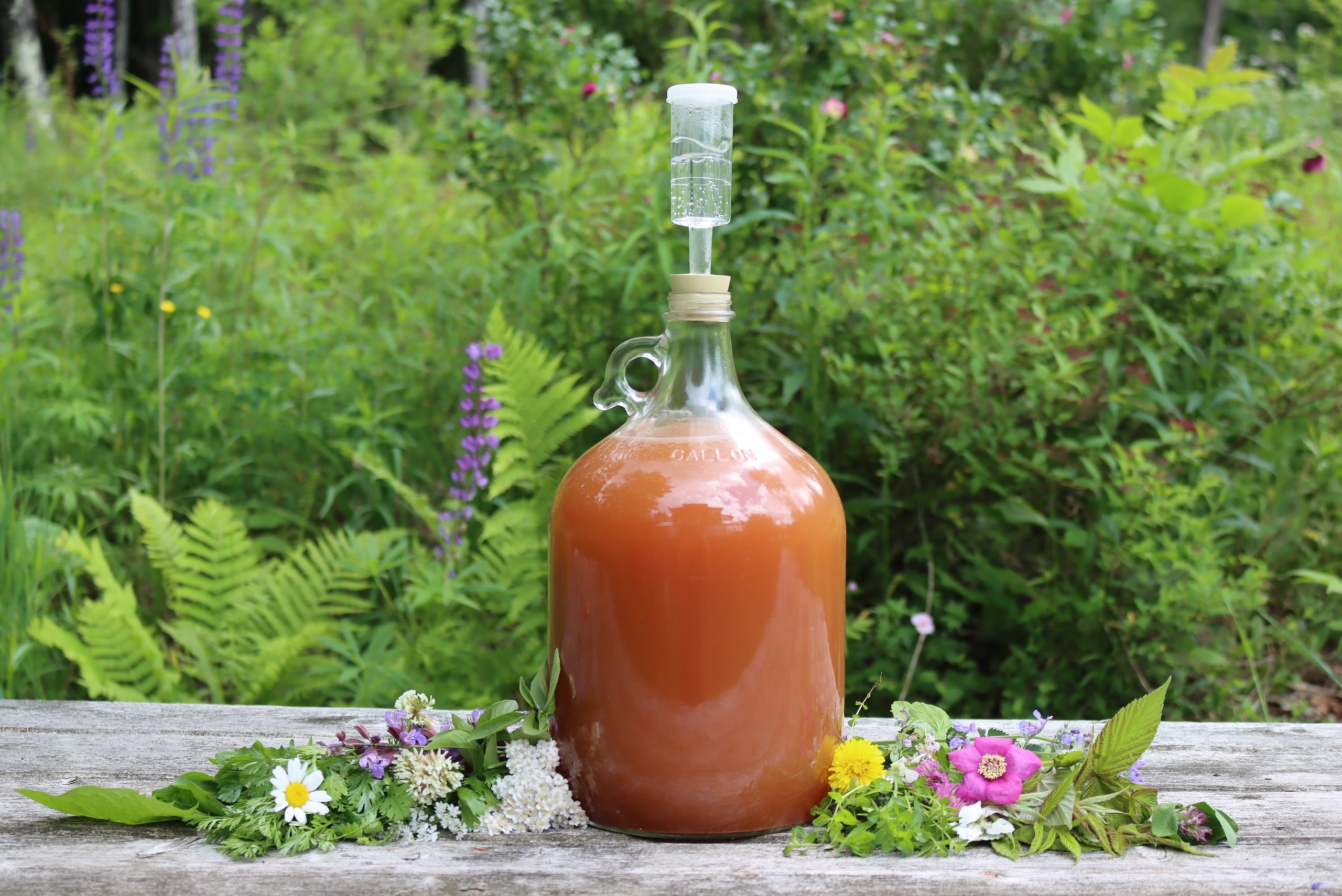
Other Herbal Preparations?
I’ve tried to cover every type of common (and not so common) herbal preparation available, but I’m always amazed to learn new methods.
If I’ve missed any, please do let me know in the comments.
Disclaimer on Homemade Herbal Remedies
I’ve been foraging wild medicines and treating my family with herbal remedies for the past 20 years, but I’m self-taught. Be aware that I am not a clinical herbalist, and this is based on my own research and personal experience using medicinal plants. I do not claim to have the experience that’d qualify me to advise you on your health, and I’m only providing this as a reference to encourage a broader interest in medicinal plants.
Please use this as a jumping-off point, but always do your own research and verify anything you read with multiple sources.
It’s always possible to have an adverse reaction to any medicinal herb, and plenty of people are allergic to even gentle herbs like chamomile. Always consult your doctor or a certified herbalist before trying any new medicinal plant. Often, they can have unintended reactions in combination with other herbs and supplements, and many herbs have side effects even when they are effective for their intended purpose.
If you are seriously interested in herbal medicine, I’d suggest investing in a course in herbal medicine, and I’d recommend any of the online courses put out by the Herbal Academy of New England. Specifically, the introduction to herbal medicine course and the family herbalist group of courses.
They also have a mushroom course, covering both medicinal and edible mushrooms, and a Botany and Wildcrafting Course. I’ve taken both and they’re informative, inspiring, and artfully presented.
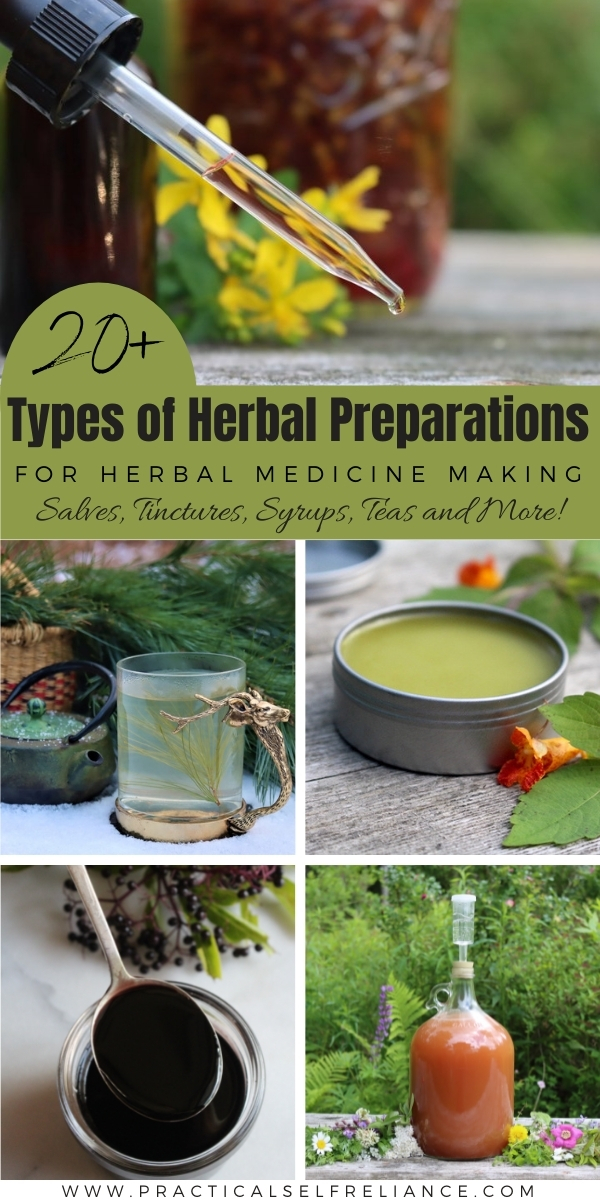
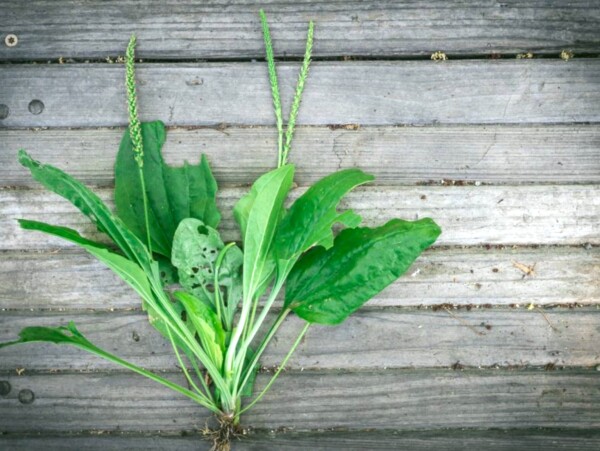

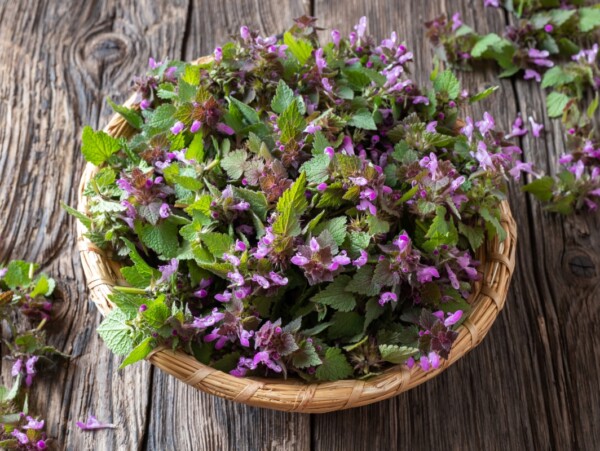
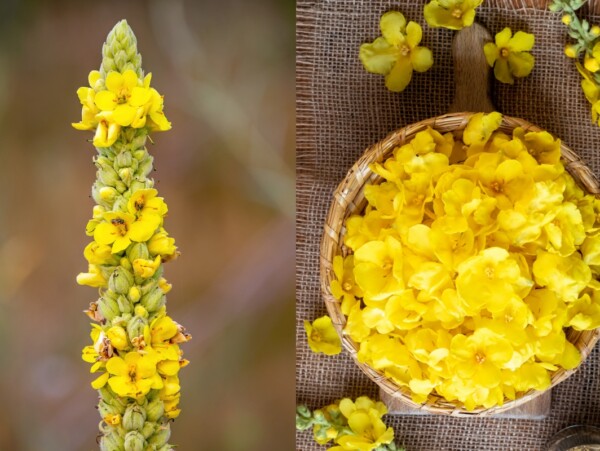










Can you use frozen herbs to make infusions. I have some frozen onions I would like to use to make a infusion of onions, would the frozen onions work or should I use fresh onions. Thanks
I have never used frozen herbs for an infusion before or heard of anyone doing it. I would probably just use fresh onions and you would need to heat the oil for the infusion and then strain out the onion immediately afterward.
Thank you very much Ashley for this very informative post. I sure gained a lot of knowledge from it.
thank you again for sharing .
Yvonne
You’re quite welcome!